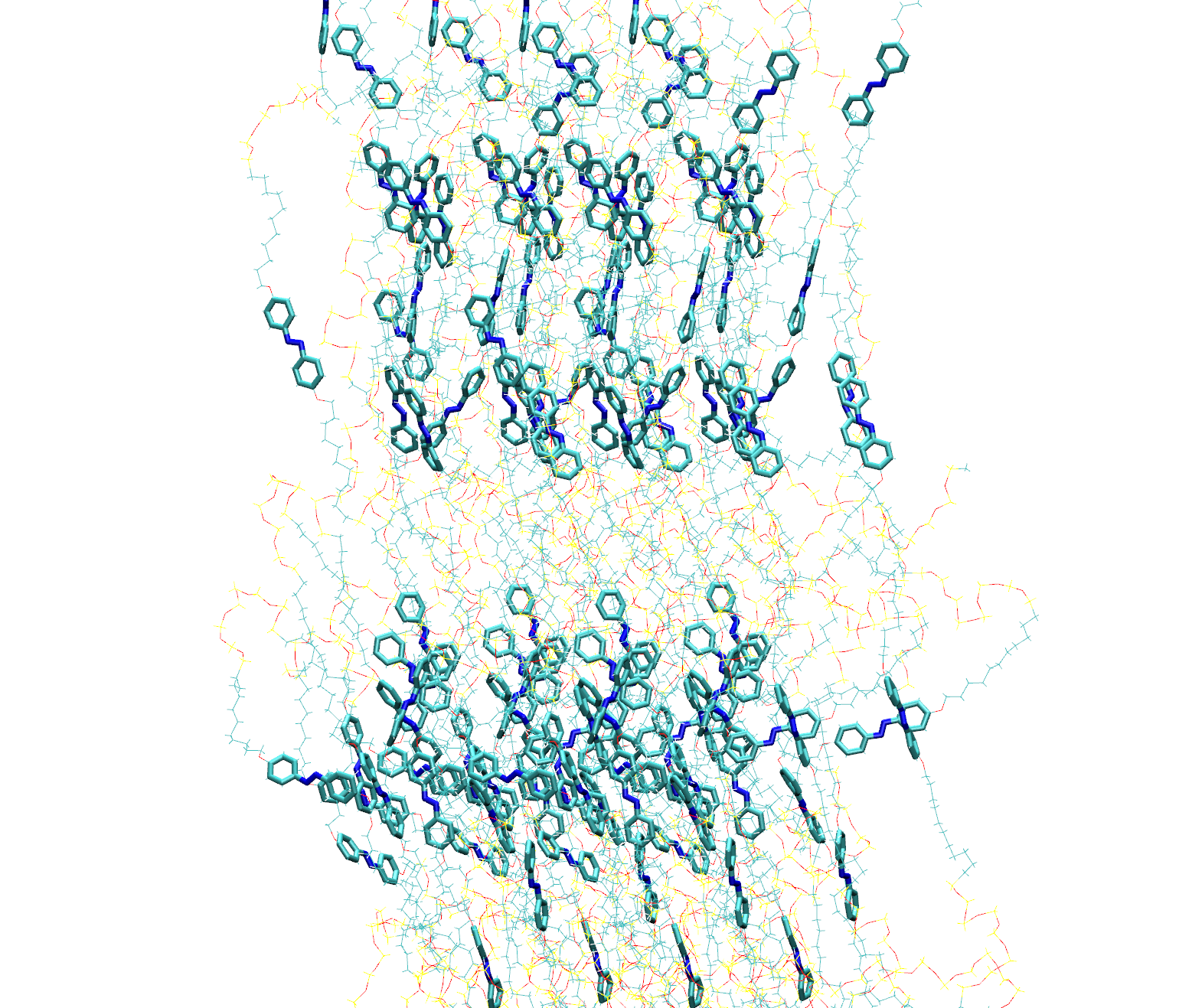Soft materials – MD simulation of Polysiloxane Azobenzene-Containing Liquid Crystal Elastomers
Liquid crystals
Liquid crystals (LC) are organic matter, which during melting does not have just one phase transition like conventional materials, but instead has a mesophase between crystal and liquid phases. Liquid crystals may flow, drip and can take the shape of their container like a liquid, but they are similar to crystals because their molecules may be oriented in a crystalline arrangement. Thus, liquid crystals play an important role in modern technology and are present in the many common devices used in our daily lives. Research into liquid crystals is growing day by day and new promising applications for such materials are discovered and developed continuously.
Elastomers
 Elastomers, of which the best known representative is natural rubber, are microscopic polymeric chains, entangled to form a net. Under normal conditions the long molecules making up an elastomeric material are irregularly coiled. With the application of force, however, the molecules straighten out in the direction in which they are being pulled. Upon release, the molecules spontaneously return to their normal compact, random arrangement. Application areas for different types of rubber are manifold and cover segments as diverse as tires and shoe soles as well as dampening and insulating elements.
Elastomers, of which the best known representative is natural rubber, are microscopic polymeric chains, entangled to form a net. Under normal conditions the long molecules making up an elastomeric material are irregularly coiled. With the application of force, however, the molecules straighten out in the direction in which they are being pulled. Upon release, the molecules spontaneously return to their normal compact, random arrangement. Application areas for different types of rubber are manifold and cover segments as diverse as tires and shoe soles as well as dampening and insulating elements.
Liquid crystal elastomer (LCE)
LCE have properties of both liquid crystals and elastomers, so the most important properties of such newly engineered material are related to their elasticity and anisotropy. A particularly interesting and unique property is their thermomechanical response. They typically elongate in the presence of nematic (orientational) order, and reversibly contract when the order is lost (typically by heating, but also by illumination or absorption of solvent). The molecular shape change is mirrored in the mechanical shape changes of the solid that the chains constitute. The changes can be very large, up to 500%.
Azobenzene-Containing Liquid Crystal Elastomers

Photoactive polymers and liquid crystals using an azobenzene chromophore have attracted much attention in recent years because of their potential for optical and photonic device applications. The most interesting feature of azobenzenes is that both isomers can be switched back and forward with light of particular wavelengths: UV light for the trans-to-cis conversion, and visible light for the cis-to-trans isomerization. Moreover, the cis isomer is less stable than the trans one because it has a bent shape which increases the steric hindrance and breaks the conjugation of the trans linear form. Thus, the metastable cis isomer will also isothermally relax back spontaneously to the thermodynamically stable trans form in the dark.
From a fundamental research point of view, there are many opportunities for using the reversible trans–cis photoisomerization of the chromophore to design new advanced materials, to discover new phenomena, and to understand the underlying mechanisms. In terms of applications, these materials have potential utilities for optical storage and other device applications.


Mechanical characteristic of polysiloxane LSCEs
Using MD simulations, we are currently investigating the induction of liquid crystal orientation through mechanical stretching. The mesogen (liquid crystal) reorientation behavior of polysiloxane LSCEs under uniaxial elongation (z-axis) normal to their initial homeotropic alignment (x-axis) was characterized by analyzing the order parameter, along with the characterization of stress-strain relation.

